In Madagascar you can watch gold diggers washing gold in red rivers and lemurs playing in the green treetops. You can see families fishing in the middle of endless rice fields. There are orchid fields used for vanilla production and insects, geckos and chameleons that are not found anywhere else in the world. Join me touring one Africa’s very best destinations for independent travel. A country that I think is among the five best in the world for travel photography.
My Madagascar visit takes place right in the middle of the rainy season. On just about page 3 in every guide book it says to stay away. It is likely to rain in the rain forest; gravel roads may become 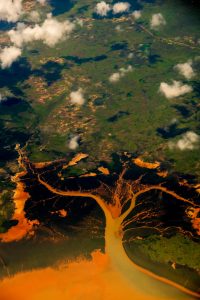 impassable and cyclones may come rolling in disrupting your travel plans and flights – my Lonely Planet informs me.
impassable and cyclones may come rolling in disrupting your travel plans and flights – my Lonely Planet informs me.
Well to me cold and dark February in Denmark seems no very attractive alternative – hence I reason that days with 30-degree temperatures hopefully will make up for some possible rain and wind. Others seem to have reasoned differently because when I arrive to the capital Antananarivo (called Tana) I am the only guest at my Avamada Lodge. Throughout the country I meet very few tourists and at times it feels like I am the only one here.
Parfait (yes, that is his real name) works as receptionist, driver, daily leader and jack of all trades at the guesthouse. He is a kind and intelligent guy and we speak a lot in French which gives me the chance to improve my mediocre French before exploring the rest of the country. Parfait has three beautiful kids, but unfortunately, he is presently undergoing a separation from his pale-skinned but local Malagasy wife. Parfait tells me that he caught her with his best friend – a guy he had previously given employment and treated like his brother.
Both people and cities in Madagascar have exceptionally long names. My great and kind driver Radosoa Rasolomonina (which is only two of his three names) is no exception. He is married and has a ten-year-old son. For six long and great days I enjoy his company while touring his 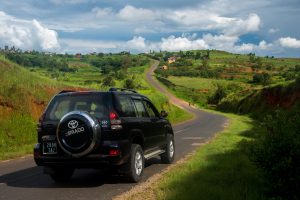 magnificent country. Rado is one of the best drivers I have ever driven with. Though the roads contain cows, wooden wagons, ducks, chicken, hair-pin turns, home-made carts and wheelbarrows, cycle rickshaws, heavy trucks, many colorfully clad people and many other interesting things Rado with ease navigates through the chaos.
magnificent country. Rado is one of the best drivers I have ever driven with. Though the roads contain cows, wooden wagons, ducks, chicken, hair-pin turns, home-made carts and wheelbarrows, cycle rickshaws, heavy trucks, many colorfully clad people and many other interesting things Rado with ease navigates through the chaos.
Outside the windows of our car the landscape often looks just like a painting. It is as if the landscape consists of only five colors. The sky is blue. The road is black. The grass and the rice fields are green since we are in the rainy season and the terraces seem to go on forever. The clouds are a perfect white.
We spend our first night in Miandrivazo – allegedly ‘the hottest city in Madagascar’ – in a simple hotel named ‘Arc En Ciel’ (heavenly arch). It feels like the temperature is +35 degrees inside the 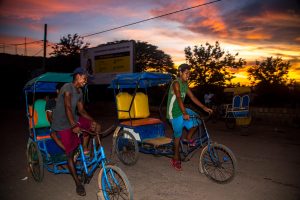 rooms. To me that is not a big problem since my room has both a fan and a mosquito net. But poor Rado (who never touches alcohol) sleeps in the common room for drivers. And in the middle of the night he is woken up by another driver who is very drunk and who opens the window letting in many mosquitoes. No fan (that also keeps the mosquitos away) and no mosquito net is supplied for the drivers so Rado unfortunately is in for a rough night.
rooms. To me that is not a big problem since my room has both a fan and a mosquito net. But poor Rado (who never touches alcohol) sleeps in the common room for drivers. And in the middle of the night he is woken up by another driver who is very drunk and who opens the window letting in many mosquitoes. No fan (that also keeps the mosquitos away) and no mosquito net is supplied for the drivers so Rado unfortunately is in for a rough night.
After driving for a day-and-a-half from Tana we arrive at mid-day to the ‘Avenue of the Baobabs’ near the (west) coastal town of Morondava. For years I have been wanting to come here and photograph this place. In less than 24 hours we have planned three visits. Mid-day, sunset and sunrise. If it rains I have factored in two potential buffer days to wait for better weather. Fortunately, these two days are not needed. The sun is shining, and beautiful white skies add a little extra to the scene. Rado says that I am a very lucky man.
The mid-day heat is humid an intense. To me It feels warmer than summer on the Arabian Peninsula. Probably that is why I am presently the only tourist here. Which I find a little strange 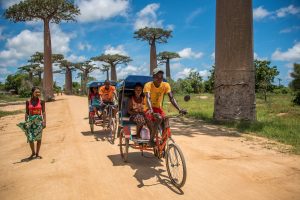 since I actually in many ways prefer the mid-day light to the softer light around sunrise and sunset. With a polarizer filter I can make the contrasts stand out – and I am very happy with the pics I get. I am especially happy since the Baobabs are now (Feb+Mar) in bloom and not many pictures exist online of blooming baobabs since most photographers stay away during the rainy season.
since I actually in many ways prefer the mid-day light to the softer light around sunrise and sunset. With a polarizer filter I can make the contrasts stand out – and I am very happy with the pics I get. I am especially happy since the Baobabs are now (Feb+Mar) in bloom and not many pictures exist online of blooming baobabs since most photographers stay away during the rainy season.
‘The Avenue of the Baobabs’ is a small part of the public RN8 – Route Nationale 8 – leading north from Morondava. It being a public road is great because it means passing ox-carts, tri-cycles and walking locals that I think add life to my pictures. Both the sunset (where I meet 7 other tourists) 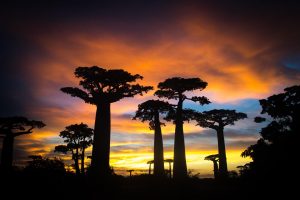 and the next day’s sunrise (where I meet 4 other tourists) are absolutely spectacular and have just the right amount of skies to make our pictures perfect.
and the next day’s sunrise (where I meet 4 other tourists) are absolutely spectacular and have just the right amount of skies to make our pictures perfect.
Later on my trip I meet a Scottish guy who has gone further north to Kirindy on RN8 a week before I arrive. Back then the water holes in the road where so deep that he could not get his off-road bike through them. So, he had to turn back to Morondava to offload most of his stuff and empty half of the gas tank to lose weight – before he could finally proceed through ‘the alley’ and on to Kirindy.
Heading back eastwards towards Tana and Andasibe National Park we drive for an hour where Rado tells me we cannot stop. On this stretch of road there were five robberies in 2018 he tells me. Two of these happened in broad daylight, three at night. Two drivers where killed. ‘But do not worry’ Rado says ‘at this time of year there are so few tourists so for sure the local mafia is not around’.
No less than three times we stop because we see giant chameleons in the middle of the road. ‘When it has rained in one area and it is dry in another’ Rado explains, ‘the chameleons move to 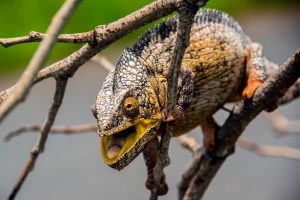 the dry area to find food and to do so they have to cross the road’. We haven’t even arrived to one of the countries’ world-famous national parks – and already we have seen three of the biggest and most rare chameleons. I can get very, very close with my Nikon. But ‘watch out’ Rado says as one of them opens its mouth and shows its rolled-up tongue. ´-This one is hungry, and its tongue is poisonous – sometimes chameleons here are making children who have picked them up to play with them go blind by shooting their tongues into their eyes’
the dry area to find food and to do so they have to cross the road’. We haven’t even arrived to one of the countries’ world-famous national parks – and already we have seen three of the biggest and most rare chameleons. I can get very, very close with my Nikon. But ‘watch out’ Rado says as one of them opens its mouth and shows its rolled-up tongue. ´-This one is hungry, and its tongue is poisonous – sometimes chameleons here are making children who have picked them up to play with them go blind by shooting their tongues into their eyes’
En-route we buy fresh pineapple, bananas and apples that grow wild everywhere around us. For some cents we also get ‘saunzu’ a local root fruit a bit like kasava – and ‘kuba’: banana-rice-cakes made without added sugar and wrapped up in banana leaves. Rado also buys a huge sack of coal for his family. ‘It will last us a month of cooking’ he explains. It costs less than 3USD – ’almost three times less than in Tana’ Rado says.
In the ’pouse-pousse’-capital Antsirabe – where the streets are filled with the hand-drawn cart-taxies who are named after the French words for push-push – we break up the journey and stay for 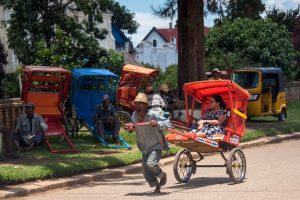 a night in the iconic colonial ‘Hotel Des Thermes’ It looks like something straight out of the movie ’The Shining’ and for some time I think that I am the only guest (except of course for Rado who again sleeps in a driver room). The corridors are long and dark and deserted, and it all feels pretty spooky. Especially when I pass a room om my floor and hear load and strange noises coming from within…
a night in the iconic colonial ‘Hotel Des Thermes’ It looks like something straight out of the movie ’The Shining’ and for some time I think that I am the only guest (except of course for Rado who again sleeps in a driver room). The corridors are long and dark and deserted, and it all feels pretty spooky. Especially when I pass a room om my floor and hear load and strange noises coming from within…
After another long day of travelling we arrive at the ‘Feon Ny’ala’ jungle camp in the Andasibe National Park. It is one of the most charming jungle camps I have ever had the good fortune to be staying at. Simple but modern bungalows built in different levels – like rice-terraces – each with a view over the misty rainforest. Every morning as I open my windows at 6 am I hear the desperate sounding cry of the indri – the world’s largest lemur that only exists here in Andasibe – over the treetops. The restaurant is set on a huge wooden platform overlooking the river and the rainforest. Here delicious and inexpensive (around 5USD each) dishes from the tasty French cuisine is served.
’Janau Uluna Tsara’ – ‘you are a good person’ – I say to all the waiters – and to every other local person I meet on my trip around the country. ‘Sah adala’ – ‘I am crazy’ I add after a little pause. This sentence I now know in around 30 different languages and it always seems to work. It makes people smile. It helps me get better photos of the locals. And it hopefully shows a little bit of respect and that I have put in a little effort learning a very few phrases (why every other traveller doesn’t do the same I have never quite understood).
In the restaurant I also meet Papijn from Holland. He has lived and studied for his PhD in Denmark and now he is leading a field trip of young students to the rainforest of Madagascar. He has already been here for a week and in despite of several jungle walks he – a little alarmingly – tells me that he has yet to see his first lemur in the wild (!?)
Maybe this is because he hasn’t used Patrice as his park ranger on his walks through the public parks of Andasibe. Patrice is 31 years old, married but has no children yet. He always cooperates with Rado – and Rado says that he is ‘the best ranger in the whole of Andasibe’
I manage to do two day walks and two night walks with Patrice in the public parks and two consecutive visits in private parks (Vakona Lodge where lemurs roam freely but are isolated to the island they live) and the private lemur and reptile reserve of Peyreiras). Inside the (public) 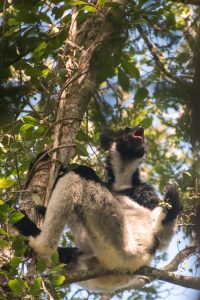 rainforest it is moist and humid and there is lots of mosquitoes, leaches and ants that make you scratch your back. Also, there are many snakes and many, many other strange animals many of which are endemic to Madagascar. I have been lucky enough to do a few jungle-walks around the world but never have I seen so many special animals as here. And just to give (poor) Papijn a little hint – maybe on his next jungle walk he should opt for the great services of Patrice..
rainforest it is moist and humid and there is lots of mosquitoes, leaches and ants that make you scratch your back. Also, there are many snakes and many, many other strange animals many of which are endemic to Madagascar. I have been lucky enough to do a few jungle-walks around the world but never have I seen so many special animals as here. And just to give (poor) Papijn a little hint – maybe on his next jungle walk he should opt for the great services of Patrice..
Here is a list of what we see – hold on tight – if you want to see photos of many more of these strange animals please see full gallery below.
- Lemurs – Indries (world’s largest lemur), Mouse lemurs (world’s smallest primate), Sifakas (Coquerel also known as the ‘dancing sifaka’ and golden), red ruffed Lemurs, Common brown and brown rufus lemurs, Woolly lemurs, (fat tailed) dwarf lemurs, bamboo lemurs, black and white lemurs and a ’sporty’-lemur.
- Chameleons: Parsons- in various colours and ages, Panther-, Furcifer-, Archaius-, Brookesia-and short-horned
- Geckoes: satanic gecko (! See photo it is the one that is almost impossible to see when sitting on a tree trunk), leaf-tailed gecko, elephant-ear gecko, day gecko felzuma (small green gecko)
- Frogs: Yellow fingered (very small and white frog with tiny yellow fingers – I think it is very rare pls let me know if you know the name of it(, tree-frog and another one that I have forgotten.
- Birds – Blue Coua a plumb bird of prey who preys on chameleons (!) – we also hear, but do not see – the rare black parrot (the vasa parrot or Coracopsis)
- Snakes: 4 different kinds of boas and a yellow and black snake.
- Insects: Walking sticks mating, (long necked) giraffe weevil, butterflies, moths etc galore
- A Tenrec that Patrice says’ tastes a bit like rabbit’
We do not see the ring-tailed lemur (maybe the most famous of them all) since it can only be found in the southern parks. We also do not see the very rare ‘Aye-Aye’ lemur – until 2014 it was not thought to live in Andasibe – but the Patrice (who else) found one…
On my last evening I meet Yoan from France at the Feon Ny’ala restaurant. He was born here in Madagascar by French parents, moved back to France when he was 3 but since he was 19, he has been exporting vanilla here from Madagascar. Next to the restaurant he has parked his big off-road motorcycle. As soon as he hears that I also drive a motorcycle he asks me if I want to take it for a spin. Yoan is a triathlete, a spear-fisher and he says that he can holds his breath under water for 6 minutes (world record is 20 minutes and naturally set by a Danish viking).
Yoan tells me that a kilo of vanilla now can cost up to 500 USD (!) and that the vanilla harvest has not been good the last couple of years (and apparently it looks even worse for next year) which is what is causing the high price. A very big part of the world vanilla production comes here from Madagascar. About 5-10 years ago the price dropped drastically when artificial vanilla came on the market (allegedly invented in the US and produced in China etc.). This naturally was a hard blow to local vanilla farmers – fortunately within the last five years demand for natural vanilla has again risen and prices are back up to previous (or higher) levels.
While Yoan and I drink a few beers Julie/Shulie from China comes and asks if she can join us. She is a business woman who sells furniture to different African countries. As soon as she is seated, she asks for Yoans WhatsApp number (‘that was quick’ – he says). Twenty minutes later she has informed us that she has a Malagasy boyfriend but that ‘that is no problem because Chinese women can easily have 4 boyfriends at the same time’. Not only on the financial level are Chinese people forward/full of initiative…
After 6 sublime travelling days – with not a single drop of rain during the days – we drive back towards Tana. On the way I tell Rado stories from the seven seas and we listen to my music that Rado seems to really enjoy. He says he likes country music, so I put on Bob Dylan, Margo Price and Bruce Springsteen. Great driving music. Rado has a little Bluetooth receiver so I can send my iPhone music out through the great Toyota Prado Landcruiser sound system. Also, Rado tells me that ‘he likes the guy who makes all his music on the computer’ so we listen to lots of Aviccii and I tell him the tragic story of his life and destiny. A few oldies from Charlottes party playlist – Eye of the Tiger, Eternal flame, Alors on dance, Daddy Cool and Sex on fire – also brings out big smiles and almost beautiful dance moves in the car. After 1.738 kilometers and around 40 hours of driving we are back where we started. It has been like doing a phenomenal road trip with a close friend and I cannot recommend Rado (rado.rasolomonina@gmail.com) or Madagascar enough.
A few days after I invite Rado, Rados sweet wife and Parfait from my guesthouse for dinner. The trip has cost me only 330USD (55USD pr day) – out of that Rado has made 30USD and DriveMada who organized the trip also gets 30USD. The rest goes to the owner of the car. Hence for working 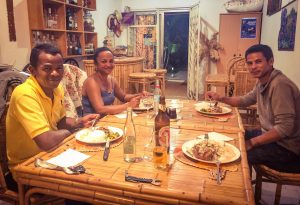 8-13 hours a day Rado makes just 6USD a day or around 60 cents an hour. For comparison Parfait tells me that a school teacher (low-grade) here normally earns around 60USD per month and that he himself makes about the same (but has free board and lodging). At the end of the day both Rado earns more than the average person in Madagascar – especially Rado who (of course) often gets tips that sometimes exceeds his regular income. Still the hourly rates to us Europeans seem ridiculously low and I feel the least I can do is to invite these guys for dinner.
8-13 hours a day Rado makes just 6USD a day or around 60 cents an hour. For comparison Parfait tells me that a school teacher (low-grade) here normally earns around 60USD per month and that he himself makes about the same (but has free board and lodging). At the end of the day both Rado earns more than the average person in Madagascar – especially Rado who (of course) often gets tips that sometimes exceeds his regular income. Still the hourly rates to us Europeans seem ridiculously low and I feel the least I can do is to invite these guys for dinner.
Parfait is a great cook. On his menu is: ‘Gambas’ (monster shrimps) in garlic sauce, chicken curry, fish in white sauce – and the great signature dish that we are now served: Steak of beef (‘Zebu’) with fresh vegetables, foie gras and vanilla sauce. The whole meal for all of us including drinks sets me back only 25USD. Why very few other travelers ever seem to invite their local helpers for dinner I don’t know – but we have an absolutely amazing night where we watch photos and video and retell the best stories from the trip.
Conclusively may I just say after having visited The Seychelles and Madagascar on the same trip that I think Madagascar is an around 1.000 times cooler and better adventure travel destination. So, if you haven’t already been and are not a 100% resort-and-beach-addict I would consider Madagascar as a future place to go. For me the country goes straight into my world wide top-5 destination for travel photography (based on seeing only the Baobab-alley, Andasibe, Morondava, Antsirabe and Miadrivazo – there are loads of other stuff to see in Madagascar). As for my African favorites I think I will place Madagascar in top-3 (after Namibia and Ethiopia) with a few runners-up’s close behind (South Africa, Sudan, Tunisia and Rwanda)
(note more photos in the gallery below than on facebook that only allows 42 pics per post)
THANX a billion to: Rado – the best driver in the world. Ole P for setting me in contact with Rado. To especially Rus Margolin and Anne Marie Boye but also Scott Shelley and Tudor Clee and others from Every Passport Stamp who advised me. Also thanx to sweet Malala from DriveMada for help planning and organizing the trip. And as always very special thanx to my all to great and much missed family for letting me travel for almost a month without them.
Practical information:
I bought the following Multi-City air tickets with Ethiopian Airways (// = on your own) :
CPH-SEY // TNR-ADD (stop), ADD-BJM (stop), BJM-CPH – total price USD 1.200,-
Additionally, I purchased the following add-on planes: SEY-MRU (one-way, Air Seychelles), MRU-TNR (one-way, Air Mauritius), TNR-HAH-TNR (return, Air Madagascar) – Total price for these tickets app 900 USD.
Car with driver in Madagascar – 55USD per day excl gas. Total gas price for 1.738 km 165 USD. Everything was organized through the very efficient DriveMada – request Rado (rado.rasolomonina@gmail.com) as your driver – he has a great network of people who can help along the way. He speaks excellent both English and French.
Facts about the Indri:
The indri is the worlds largest lemur. An indri typically eats 2-3 kilos of leaves every day. The indri is an endangered species. It only lives in the Andasibe area in Madagascar. According to Patrice there are presently 67 Indri families left. Each family typically consists of 4-6 individuals bringing the total population to an estimated 3-400 indris. There are no indris in any Zoo since they stop to eat if moved to a Zoo (or another park). According to Patrice we saw a total of 8 indris on our two Andasibe day walks.
Gallery:

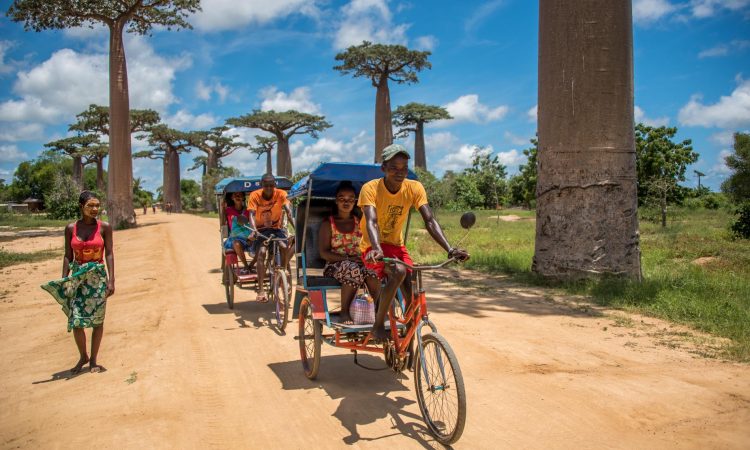
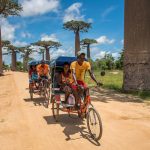
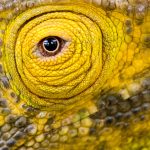
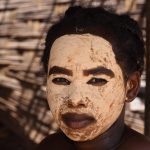
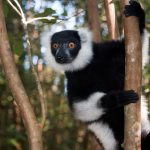
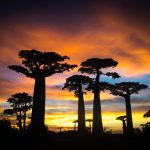
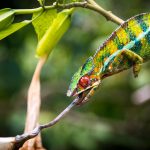
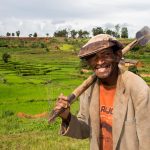
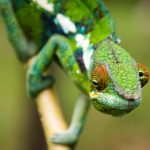
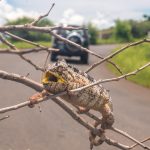
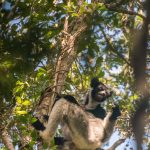
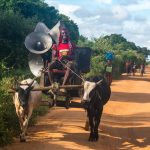
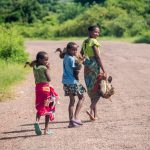
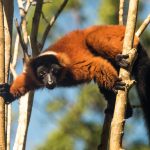
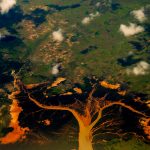
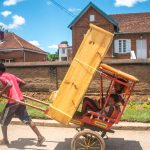
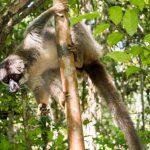
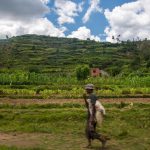
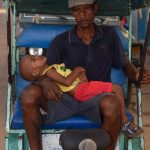
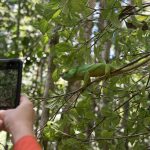
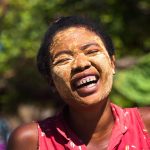
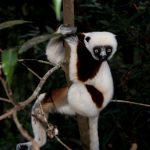
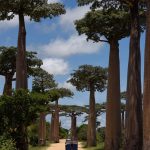
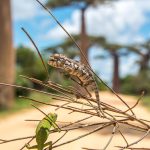
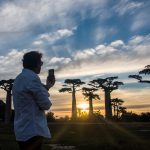
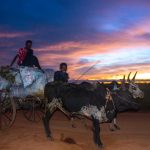
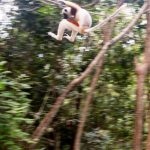
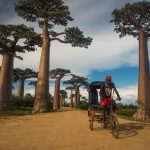
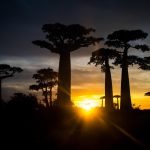
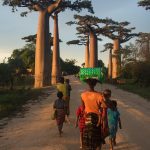
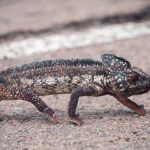
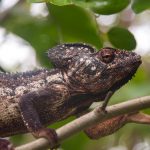
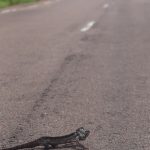
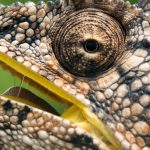
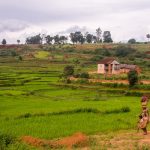
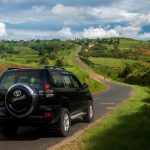
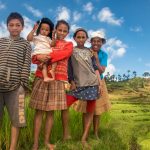
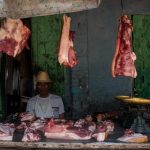
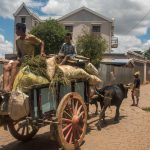
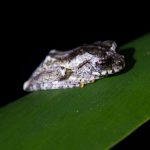
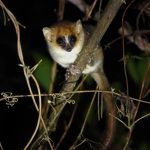
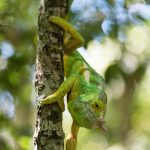
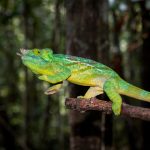
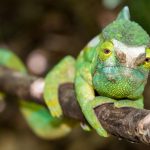
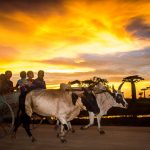
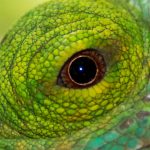
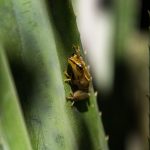
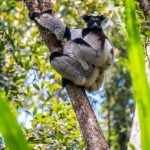
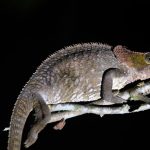
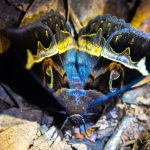
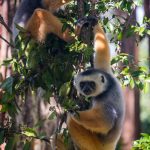
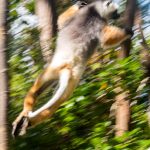
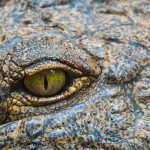
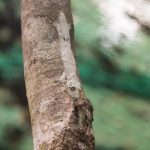
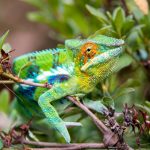
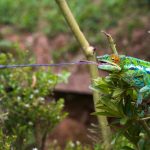
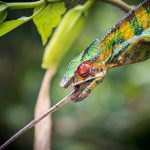
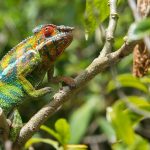
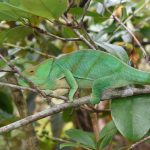
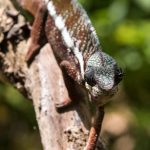
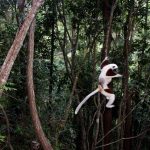
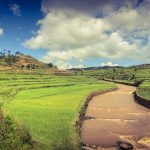
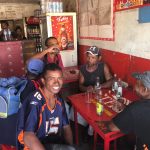
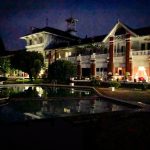
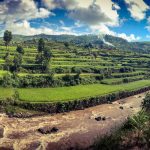
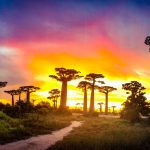
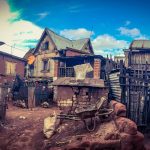
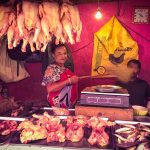
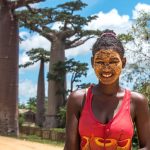
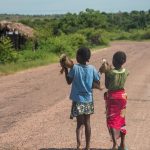
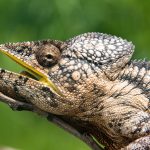
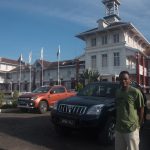
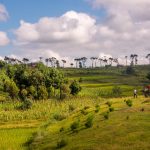
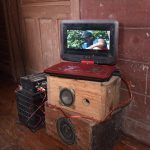
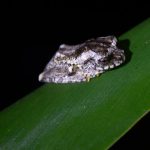
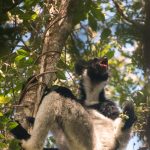
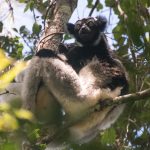
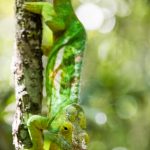
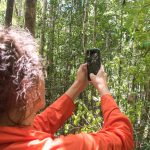
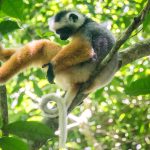
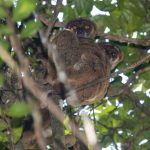
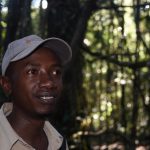
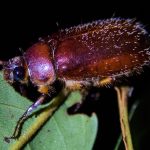
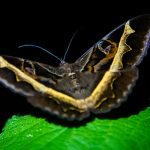
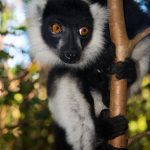
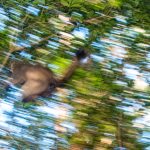
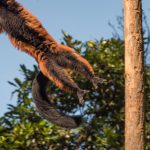
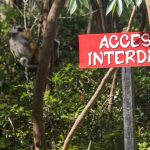
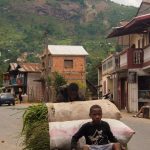
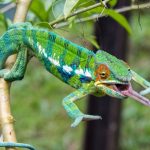
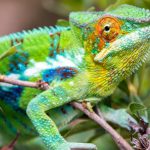
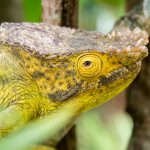
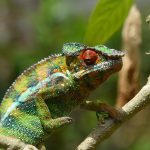
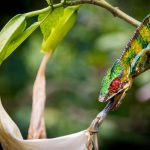
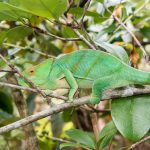
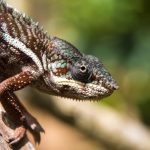
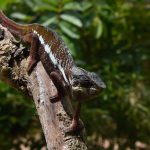
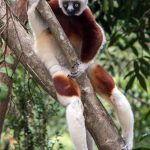
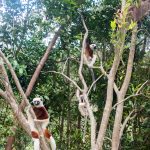
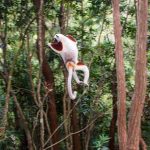
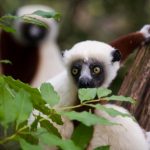
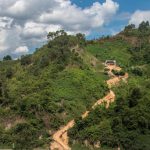
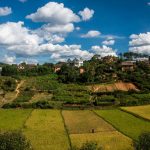
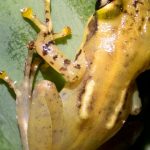
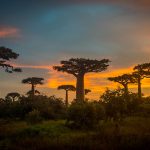
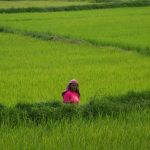
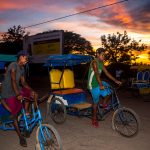
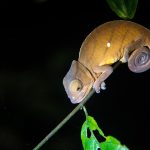
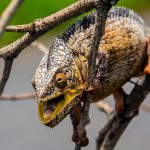
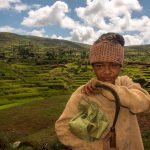
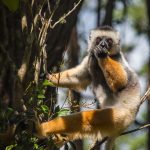
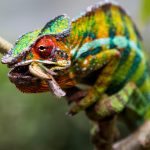
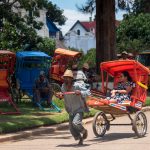
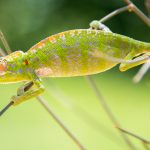
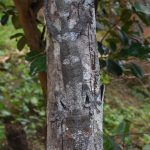
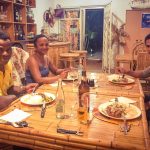
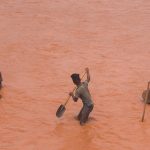
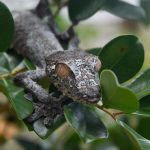

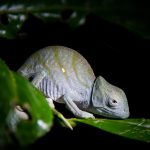
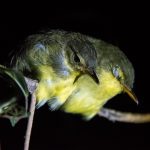
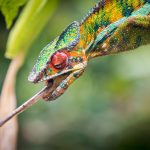
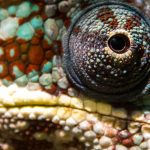
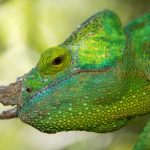
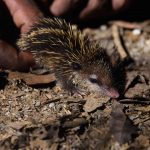
Posts like this are definitely increasing Madagascar on many people’s priority list.
Great photos!
Hi Jakob,
Very beautiful photos as always. You should seriously be making a book or an exhibition at least.
My trip to Madagascar was a bit different than yours with my family. The roads and going to the Tsingy made me cringe a bit, as being the driving-force of all trips I always carry the burden of guilt in case anything happens when we are traveling. Luckily, it was fine in the end but we had some heart-wrenching moments when giving out to the locals, kids fighting over an old pair of baby socks, again kids crumbling the biscuits in their hands not to give it to others that were trying to get it. We also had a very unfortunate swindling at the airport, in the presence of our guide Jean-Claude, which I would suggest anyone to be careful about. I’ll be writing about it when I get the chance.
Anyway… So you have only one left to go! When are you heading to Eritrea? Beautiful Asmara, beautiful people. I wish I could have gone to Massawa too but all these permits are just so bothering.
Congratulations to you in advance. All the best to your family and enjoy your travels 😉